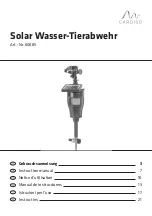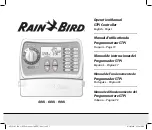
36
If you intend to use SMSC numbers then please review A.3.0 in the JSR 120
specification. The use of an SMSC would be used if the MIDlet had to determine what
recipient number to use.
SMS Storing and Deleting Received Messages
When SMS messages are received by the MIDlet, they are removed from the SIM card
memory where they were stored. The storage location (inbox) for the SMS messages has
a capacity of up to thirty messages. If any messages are older than five days then this will
be removed, from the inbox by way of a FIFO stack.
SMS Message Types
The types of messages that can be sent are TEXT or BINARY, the method of encoding
the messages are defined in GSM 03.38 standard (Part 4 SMS Data Coding Scheme).
Refer to section A.5.0 of JSR 120 for more information.
SMS Message Structure
The message structure of SMS will comply with GSM 03.40 v7.4.0 Digital cellular
telecommunications system (Phase 2+); Technical realization of the Short Message
Service (SMS) ETSI 2000.
Motorola’s implementation uses the concatenation feature specified in sections 9.2.3.24.1
and 9.2.3.24.8 of the GSM 03.40 standard for messages that the Java application sends
that are too long to fit in a single SMS protocol message.
This implementation automatically concatenates the received SMS protocol messages
and passes the fully reassembled message to the application via the API. The
implementation will support at least three SMS messages to be received and
concatenated together. Also, for sending, support for a minimum of three messages is
supported. Motorola advises that developers will not send messages that will take up
more than three SMS protocol messages unless the recipient’s device is known to support
more.
SMS Notification
Examples of SMS interaction with a MIDlet would be the following:
A MIDlet will handle an incoming SMS message if the MIDlet is registered to
receive messages on the port (identifier) and is running.
















































